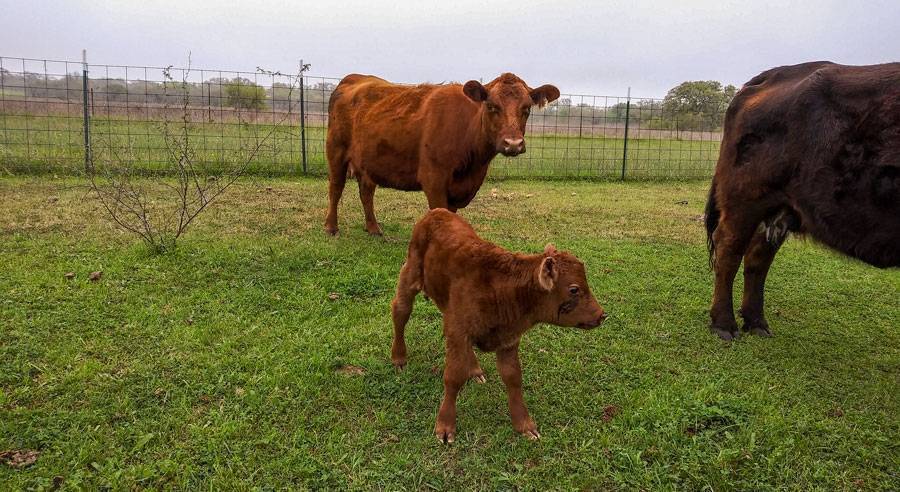Our Program
Our hope is to improve the genetics and preserve the history of the Aberdeen Angus/Lowline breed. We also want to educate others regarding the benefits that Aberdeen genetics can add to their cattle programs and profitability.
Our Aberdeen genetics can be traced back to the original Lowline herd imported and developed by the Trangie Research Center in Australia in1929.
We breed and sell both red and black Aberdeens, however, our focus leans a bit more toward reds. Most cattle in the world today reside in climates that require or can benefit greatly from heat tolerance. Red Aberdeen cattle have increased tolerance to heat and resistance to sun damage to their eyes and udders.
In our initial search for red Aberdeen to make up our herd, we realized we kept running into many of the same bloodlines repeatedly. We wanted a genetically unrelated line to be able to avoid line breeding.
Improving the breed efficiency and productivity in a herd can only be done by using proper and sound genetic selection. One of the main factors that can limit genetic improvement is line breeding. The Australian Lowline Cattle Association states that “to progress your herd, a new bull or AI should be introduced every two years”.
We currently own two Champion Bloodline Red Aberdeen Angus bulls. Both are phenotypically correct and sound and exhibit excellent progeny performance. We also use semen from select bulls, vintage and current, black and red, to enhance the red and red factored lines. Additionally, we utilize embryo transfer within our own herd and offer it to clients as well.
The market of the future demands efficient cattle that produce quality carcass with more beef per acre while requiring fewer operating costs. A crossbreeding program using Aberdeen/Lowlines to moderate your cattle is THE fastest way to become more efficient and profitable.
| Breed | Avg # of breeding cows per 100 acres | Pounds of avg carcass per head wt. at 15 mo. off grass | Pounds of carcass weight per acre | Retail carcass yield % salesable | Pounds of retail product per acre |
|---|---|---|---|---|---|
| Simmental | 23 | 556 | 115.0 | 69% | 79.4 |
| Wagyu | 38 | 442 | 151.1 | 55% | 83.1 |
| Shorthorn | 28 | 532 | 132.4 | 65% | 86.1 |
| Hereford | 30 | 552 | 147.2 | 64% | 94.2 |
| Murray Grey | 32 | 547 | 157.7 | 67% | 105.7 |
| Angus | 33 | 543 | 161.7 | 68% | 110 |
| Lowline | 54 | 418 | 203.1 | 76% | 154.3 |

A few facts about Aberdeens/Lowlines:
- Get MORE BEEF PER ACRE (not head of cattle per acre). One can put 2 Aberdeen per acre as opposed to one larger breed and still have lower operating costs
- Naturally polled and docile. An excellent consideration for youth programs, those new to or less experienced with cattle, those wanting to have cattle that are easy to work with, or wanting to add this trait to their existing herd
- Free of all known genetic defects, including the Dwarf gene
- Approximately 271 day gestation, ease of calving and excellent maternal instinct
- Average full blood Aberdeen bull is large enough to cover commercial cows
- 30% larger ribeye per hundred weight, smaller individual muscle fibers leading to more tender, well marbled beef
- Weaning weight at 40-50% weight of dam
- High adaptability to various grazing conditions, good foragers, and hardy
- More grass efficient than many other breeds
- Consider the data in the table below from Trangie Research Center